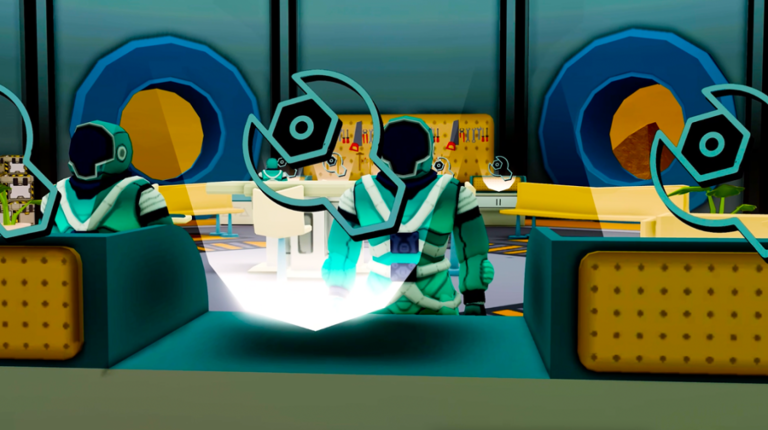Roguelike Games: Building Grit and Critical Thinking Skills through Challenging Gameplay
Part 1 of our new Game Genre Series examining how popular video game mechanics build real-life skills.
Most people can acknowledge the educational value of traditional games like Chess, Monopoly, or Sudoku. But when it comes to video games, many people just don’t see the value.
Video games often come across as pointless wastes of time. Or even worse, violent and disruptive wastes of time. And this creates a huge barrier to recognizing their vast potential for teaching valuable life skills.
We get it! As a parent (especially if you’re unfamiliar with gaming), you’re likely wondering how games like Call of Duty Zombies or Among Us have any educational merit. Your kid is now walking around, calling everything “sus”. How, exactly, is that helping them learn anything?
But outside of the trendy game lingo and shoot ‘em up styles of gameplay is a large array of game mechanics that combine to create challenging and intriguing stories and quests that build and grow as you play. And just like life, you can’t just jump into the middle of it and understand it all.
So, before we dive into the meat of this series and discuss the details of the roguelite and roguelike gaming genre, let’s take it back to the beginning and explore a typical gamer’s development as seen through my own gaming history.
A Gamer’s Learning Roadmap
I understand that grasping the concept of learning through gaming can be challenging for many parents. Especially those who aren’t immersed in the gaming world. That’s why, as a former gamer and educator, I’m excited to share my perspectives on gaming with you. And by the end of this blog, my hope is you’ll be eager to observe your child playing their games and be able to pinpoint their incredible, skill-building potential.
Every gamer is different, of course, but many will follow a similar course as they enter the world of video games. Here is a brief history of my own gaming journey. How does it compare to yours or your child’s?
Social gaming
Contrary to popular belief, video games are often a social experience. And many people are first introduced to video gaming with fun, party-type games. I got my first taste playing Mario Kart and Guitar Hero with others.

Gaming is often a highly social experience.
I vividly remember the difficulty of moving my fingers across the buttons and keys — mastering timing while trying to memorize the functions of each button. It was a blast to watch and cheer others on too. And the more I practiced, the more it transitioned into muscle memory. And I got a little bit better every time.
Investing time into gaming
As I grew older, I became interested in more complex games. Games that had longer storylines or involved lots of leveling up to complete tasks. Some were multiplayer. Others were games I could enjoy playing and practicing on my own.
I had to memorize button combinations in Mortal Kombat, remember crucial resource locations in EverQuest and World of Warcraft, and comprehend the intricacies of power grids and road networks in SimCity (ah, nostalgia).
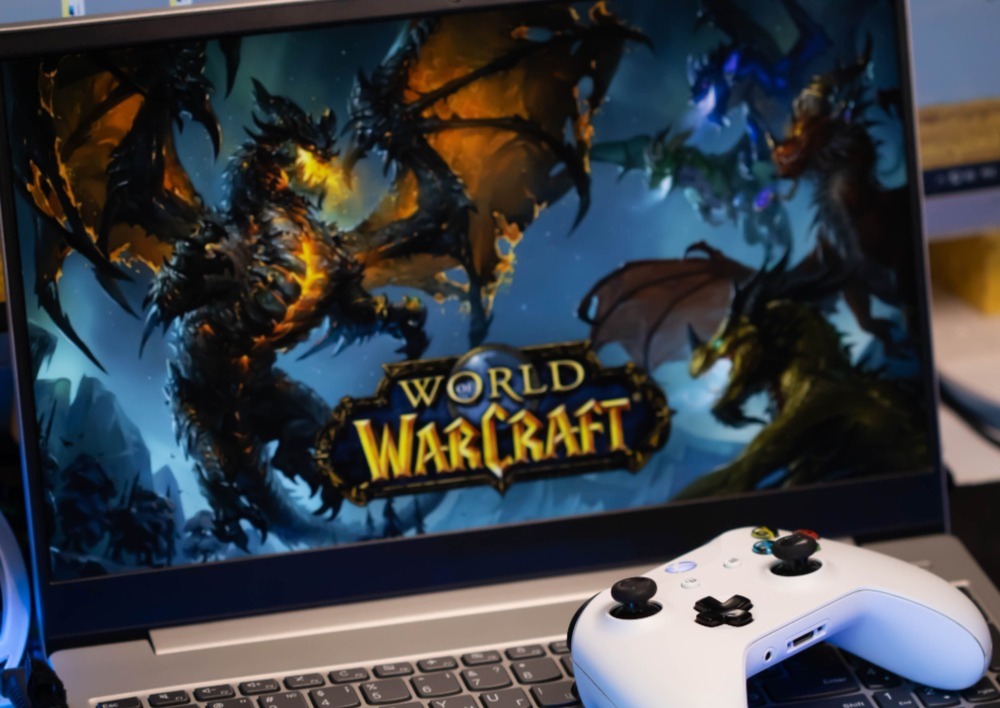
World of Warcraft is a multi-player game with complex story lines.
A gaming bonus — it’s rare to ever max out your potential in a video game. There’s always something else new to reach for — a higher score, a new quest, a stronger boss. Even if you beat a game, you can always try to do it again in less time, with fewer moves, or play it more stealthy. There’s always a new challenge in gaming.
And if you do max out the fun and learning in one, there are millions more to choose from. And then it begins again with the journey from beginner to pro in each individual game.
Gaming Genres and Developer Choices
Every video game, just like a novel, has an author. And these game designers play a crucial role in creating and designing gameplay mechanics, rules, levels, and storylines to create engaging player experiences.
Which game mechanics are chosen by a developer will create significant, and different, learning opportunities for players. In this blog, we’re focusing on the roguelike and roguelite subgenre — a style of game that combines strategy, exploration, and unpredictable challenges. And we’re gonna dive deep into two core elements of roguelike/lite games to highlight how they teach valuable life skills.
Because when you understand these mechanics, you can more easily see the learning. And even better, it gives you a chance to initiate meaningful conversations with your child about their gameplay, helping them realize how to transition these skills into the real world.
What are Roguelike and Roguelite Games?
Roguelike and roguelite games are some of the most challenging video games you’ll play. They’ve been around since the early 80s when the game Rogue was introduced (which also explains the slightly awkward name of this genre).
Rogue was a classic dungeon crawler with a couple of significant, foundational elements that now define the roguelike/lite genre — permadeath and procedural generation. And this translates into a lot of complexity.
Permadeath
When a game chooses to use permadeath, checkpoints won’t save you if you die. Every time your character perishes, you start back from the beginning. It’s like losing an unsaved, important presentation on your computer due to a crash. It leaves you wanting to scream, cry, or throw things — rage-quitting at its finest.
Permadeath adds a ton of tension, requiring strategic decision-making as players must carefully manage risks and resources. In true permadeath (more on that below), there are no second chances—no saving loot, weapons, or defeated enemies. Players must simply start over and try again.
But the mechanic of permadeath is also where the primary difference between roguelike and roguelite comes into play.
In a traditional roguelike game, all of your progress is wiped out with a death. You start back with zero experience, zero accumulated items, and no cool, acquired moves. And thanks to procedural generation, you don’t even have the memory of previous playthroughs to rely on. You, the player, have gained game experience, but it’s frustrating to be otherwise starting from scratch.
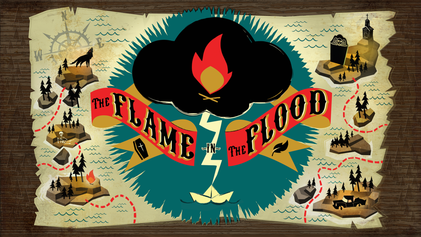
The Flame in the Flood is a “roguelite” game.
More often games use a roguelite model. In roguelite style, dying still means losing your game’s progress. But often some of your character’s progress can be saved. For example, in a roguelite game, you’ll keep your upgraded armor and earned abilities when you start over. Or in a game like The Flame in the Flood, you restart with anything that was in your backpack when you died. And though this eases the frustration a bit, it also adds another layer of planning and strategy to an already complicated game.
Procedural Generation
Another hallmark of this genre is procedural generation — which is just a fancy way of saying that the game itself changes. And when you combine this with permadeath, the overall challenge is intensified.
Remember that project you lost when your computer crashed? Now imagine that the criteria and timeline of this project have also changed because you failed to save it. That’s one unfortunate mistake with significant (and yes, frustrating) consequences.
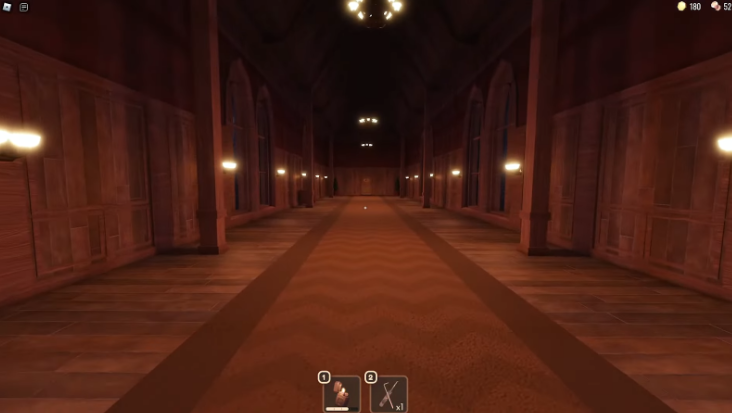
The Roblox game Doors has randomized levels, environments, and items.
Games using procedural generation have randomized levels, environments, and items. Yes, there may be a few specific maps that you always see (and may even repeat), but the order in which you encounter those maps, and the items or enemies you encounter in each, are different every time you play (the Roblox game Doors is a perfect example of this).
Procedural generation ensures that each playthrough is unique, enhancing replayability and unpredictability.
Life Skills and Learning Opportunities in Roguelike Games

Deepwoken is a roguelike/roguelite game.
These two common mechanics in roguelike and roguelite games — permadeath and procedural generation — naturally foster the development of many life skills. If your child enjoys this style of gameplay, here are just a few of the skills they can build as they play.
Grit & Determination
Being able to experience failure, then pick yourself up, dust off, and get back to the task at hand is a much-needed skill in this fast-paced world. When a gamer chooses a roguelike game, they learn to accept setbacks. And even better, they consciously choose to start over, even after previous frustrations and failures.
This skill is not only sought out by employers (especially in the technology sector), but is also helpful in day to day life. If you really want something, you can’t let failure get in the way. And players of roguelike and roguelite games know this better than most.
Metacognition
Metacognition involves having an understanding of your own thought processes. Why do you make the choices you make? What considerations go into these choices? If someone has well-thought out replies or actions, they are skilled in metacognition.
In the rogulike gaming genre, players get plenty of chances to reflect on their previous decisions. Each death is an invitation to look at what worked and what didn’t before starting again. Contemplating ways to improve and considering alternative approaches is definitely a skill that gets better with practice. And roguelike/lite games provide plenty of it.
Understanding Consequences
In life, every action and decision has a consequence — either good or bad. And most video games are the same way. But roguelike games stand out due to the intensity of the consequences. Make a bad choice and you’ll definitely feel the results.
Players of this game style quickly realize that their actions have consequences. It will only take a couple of careless mistakes to discourage any attempts of rushing through a game. You immediately feel the importance of taking your time and thinking through your actions. And that’s a wonderful understanding to carry over into the real world.
Adaptability
When you’re presented with something new or unexpected, how do you react? Being able to stay calm and work through the new information is a hugely important life skill.
Because of procedural generation, no one playthrough in a roguelike/lite game is the same as another. But players can identify skills they’ve learned in past runs and decode how to apply them in each new situation or environment. This goes well beyond memorization involved in easier games (and most classrooms), building neuroplasticity and out-of-the-box thinking.
Critical Thinking
It seems like almost every job description today is looking for someone with critical thinking skills. But how do we build these skills in our children? Video games, especially challenging ones like those in the roguelike/lite genre, are an often overlooked resource for practicing critical thinking.
With each death, players must strategize and seek better ways to tackle challenges and achieve improved results. What is working for me? What do I need to do differently? How many times should I try this before I move onto a different tactic? This trial and error thinking can be practiced and honed while playing these games.
Bring Even More Learning to Their Gaming with Kinjo!
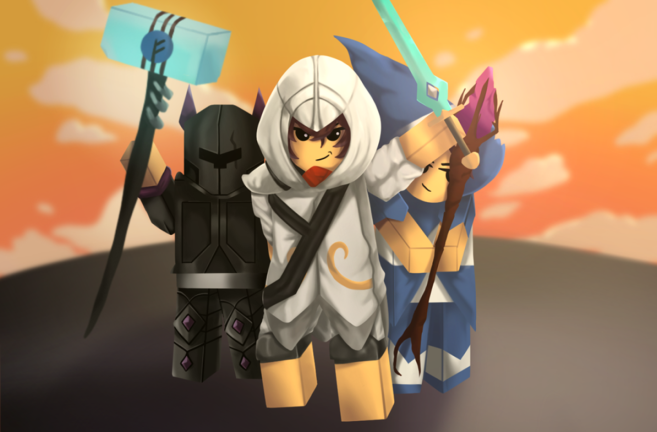
Rogue Nightmare is a Kinjo recommended roguelike/roguelike game.
Does your child enjoy roguelike or roguelite style games? Whether they’re already big fans, or you think they’ll find the challenge exciting, you can rest easy knowing they’re learning tons from these games.
Looking to suggest a few roguelike/lite games for them to try? Check out the Kinjo-recommended Roblox games Rogue Nightmare or Deepwoken: Verse! These games are challenging and fun. And because they’re Kinjo-recommended, you can also be sure they’re full of life-skills learning.
And don’t forget to chat it up with your child about their gameplay. Ask questions about the choices they’re making. And then explore together how those choices can translate into real-life scenarios. By recognizing the potential for learning and growth in video games, you can bridge the gap between gaming and education.
Need a bit more info before you’re ready to jump into the gaming lingo? Explore our blog for loads of parenting, learning, and gaming resources. With our help you’ll go from noob to pro in no time! 😉





